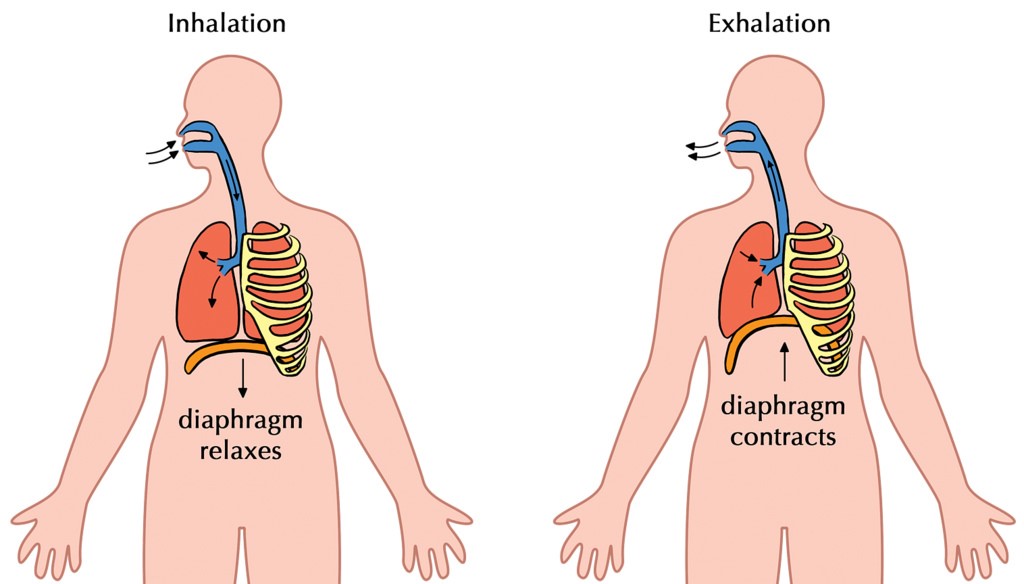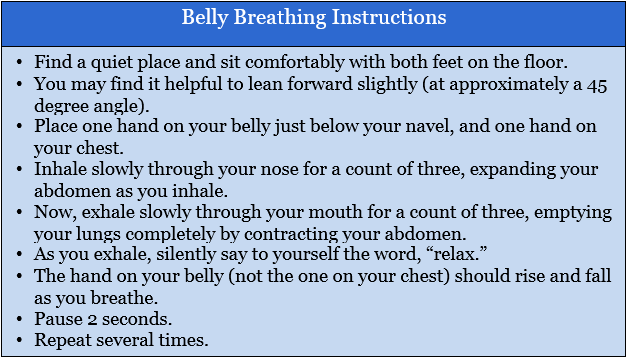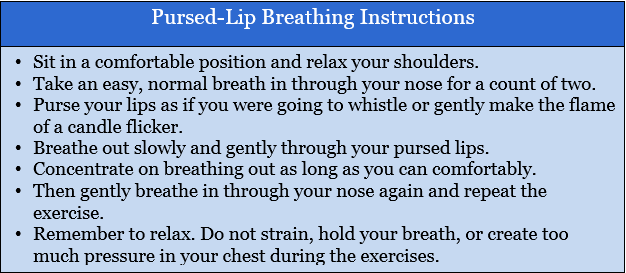Deep breathing:
- Is popular and effective in people with medical illnesses
- Helps reduce rapid breathing and a racing heart
- Helps reduce distress
- Can be done with a friend or loved one
This section will discuss two types of deep breathing exercises. One exercise may work better for you or you may find both are helpful for you. The video on the PALS Distress Management webpage demonstrates how to complete deep breathing exercises.
Breathing Exercise #1: Belly Breathing
Belly breathing:
- Helps you take deep breaths
- Slows your heart rate
- Uses the muscles below your lungs called the diaphragm (see the picture below)
- Keeps you from taking shallow breaths using your chest muscles

Do not:
- Strain or hold your breath
- Exhale so slowly that you are uncomfortable
If counting to three while inhaling and exhaling is too long, count to one or two instead.
You can use belly breathing at any time. For the best results, practice 10 minutes twice a day.
Breathing Exercise #2: Pursed-lip Breathing
Pursed lip breathing:
- Is helpful if you are out of breath, such as after climbing stairs
- Releases air that is trapped in your lungs and slows your rate of breathing




